Red Foot tortoise We have some fantastic captive bred super colorful red foot tortoise for sale. The Red Foot tortoise is one of the most popular pet tortoise for sale in the United States and is also known for being one of the more colorful species of tortoise for sale in the world. Average size is 10-11″ and 15-20 lbs at 20 years of age. Red foots can live up to 100 years when properly cared for.
Red-footed tortoises are native to the dry and wet forests and grasslands of Central and South America. A popular pet with striking shell coloring and markings, red-footed tortoises are long-lived and relatively easy to care for. If you’re thinking of getting one, expect to make a significant investment in equipment, food, and your living space for what could be a 50-year commitment.
Red-Footed Tortoise Behavior and Temperament
These animals are not high-maintenance, as long as you set up their enclosure correctly the first time with proper lights, heat source, humidity, and put everything on timers. The main daily chores involve feeding, water bowl changes, and cleaning up pet wastes.
As a rule, you should prevent small children from handling turtles and tortoises, mostly due to the possibility of spreading salmonella. This bacteria lives in the intestinal tract of most reptiles, and it can cause illness in humans.1 Good hand-washing hygiene can prevent bacterial infection.
Unlike some other breeds of tortoise, the red-footed are relatively active during the day. In the wild, they spend most of their time digging and foraging. If they’ve eaten a large meal, however, they can spend as long as a week resting.
Wild red-footed tortoises are prolific burrowers. They burrow to seek shelter, cool down from the heat, and hide from predators. They feel most secure in a hiding spot where they fit tightly, such as a tree trunk, sometimes wedging several tortoises in at once.
Also, in the wild, red-footed tortoises often display social behavior, such as sharing food and gathering in small groups. They’re not overly territorial of nesting or feeding sites unless two males are competing over a female.
Housing the Red-Footed Tortoise
An ideal enclosure for the red-footed tortoise is a sturdy, escape-proof enclosure outside. This species is native to tropical areas and prefers a humid climate. Set up a sprinkler or mister to increase the humidity if needed. This tortoise loves a muddy wallow or puddle for cooling off. You can sink a shallow water pan into the ground but make sure the tortoise can safely climb out of it.
If possible, provide a shady area densely planted with vegetation for a cool retreat. A doghouse-type shelter can also work as a shady spot. The walls of the enclosure should be about 16 inches high and even go a few inches below the ground to prevent your red-footed tortoise from digging and escaping.
You can house this tortoise indoors, but you will need a large enclosure (roughly 4 feet by 8 feet though larger is even better).
For cleaning, spot clean or scoop out pet wastes. Clean and disinfect the water container daily.
Heat
As cold-blooded creatures, all reptiles need to regulate their body temperature. They need a thermal gradient or spectrum of temperatures so that they can keep their body temperature at an optimal level. The average daytime temperature—whether outside or indoors—should be 85 F to 90 F. The tortoise will also need a basking spot that reaches up 95 F.
If the temperature drops lower than 80 F, you will need to add a heat source. If nighttime temperatures drop to 70 F or lower, heat the outdoor shelter to 70 F or bring in your tortoise to an environmentally controlled indoor enclosure. Temperatures lower than 70 F put the animal at risk for developing a respiratory infection or hypothermia.2
Red-footed tortoises do not hibernate, but they may start to slow down during the colder months, even if housed indoors.
Light
Full-spectrum ultraviolet light is necessary for an indoor enclosure since your tortoise will not get unfiltered sunlight. Tortoises require UVB rays to synthesize vitamin D3. Vitamin D3 helps the tortoise absorb calcium, which is crucial for bone structure and growth.3 All indoor enclosures should include a 10 percent fluorescent UVB tube light with a reflector to spread the UVB rays downward to the tortoise.
Humidity
These tortoises do well in 50 percent to 70 percent humidity. A pan of water should be provided at all times for your red-footed tortoise to walk into as well as a dig box of moist organic dirt or sphagnum moss at least 6 inches deep. Use a hygrometer or humidity gauge inside the cage to monitor moisture levels accurately.
Substrate
Most pet owners use a substrate or bedding to line the bottom of the cage. In the case of tortoises, they need it for digging. Use cypress bark, orchid bark, or sphagnum moss as a substrate, which also helps retain humidity. Paper will also work and is easy to clean. Change the substrate every one to two weeks to prevent mold and excessive bacterial growth


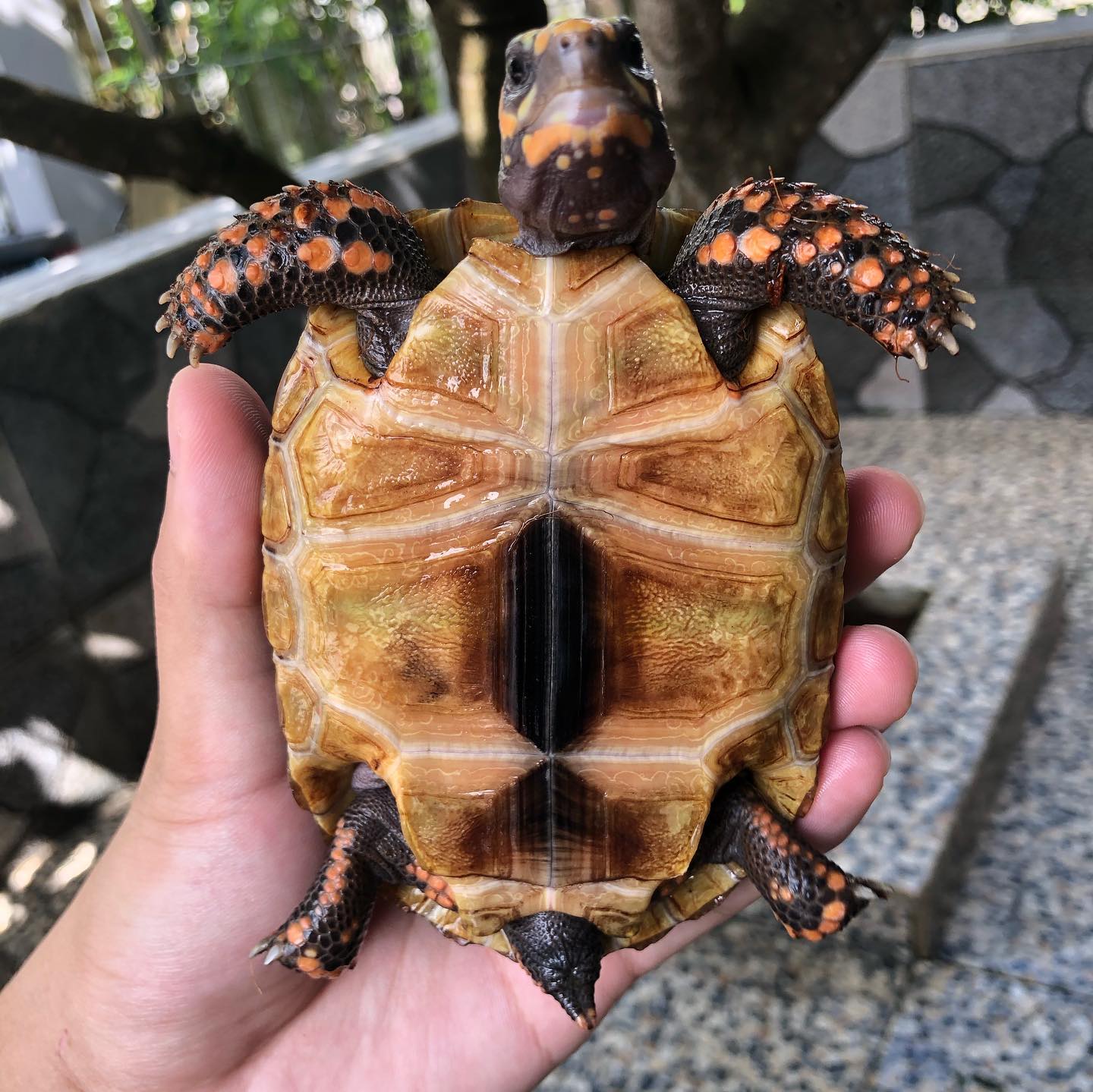
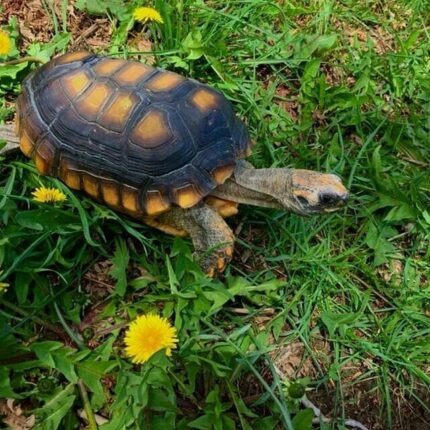
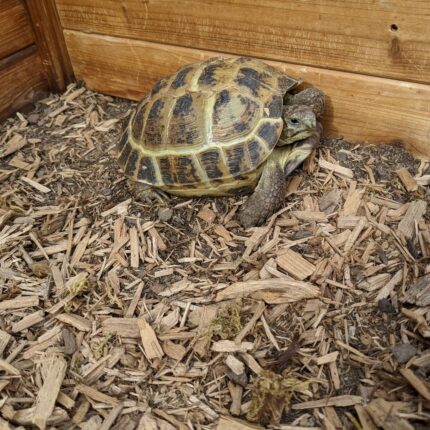
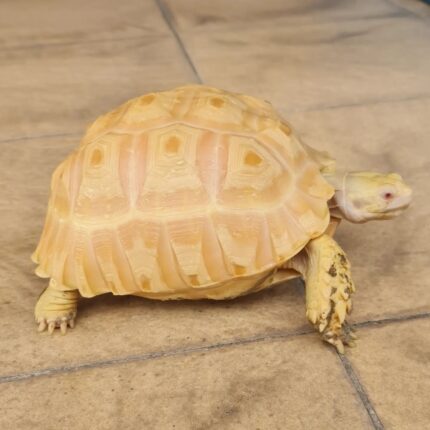
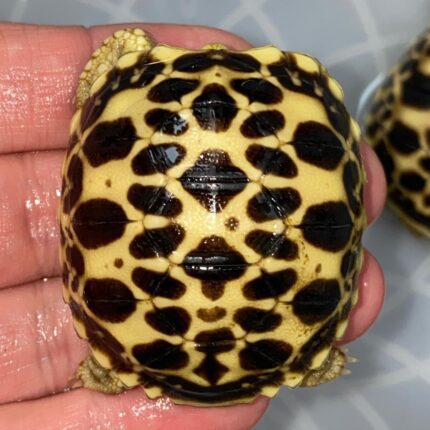






Reviews
There are no reviews yet.